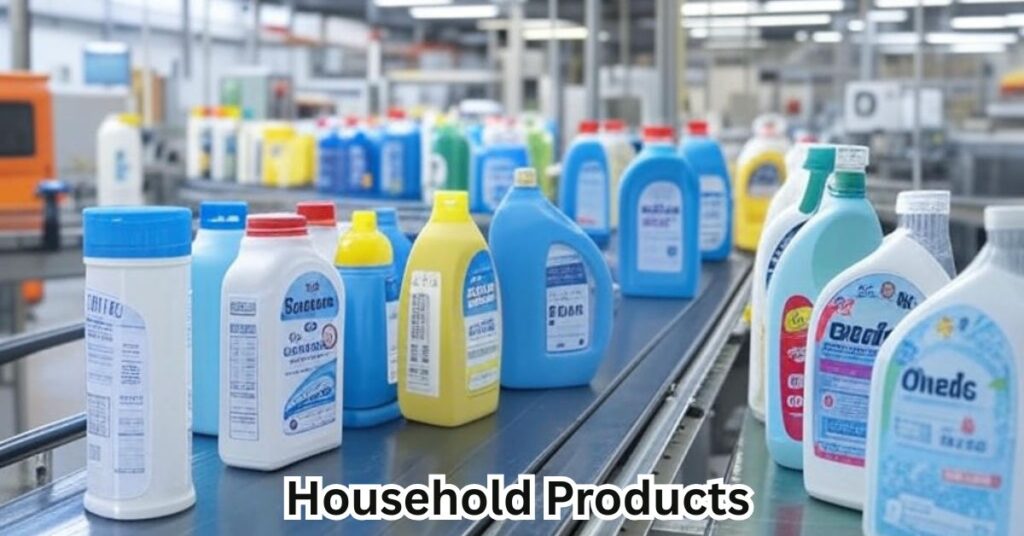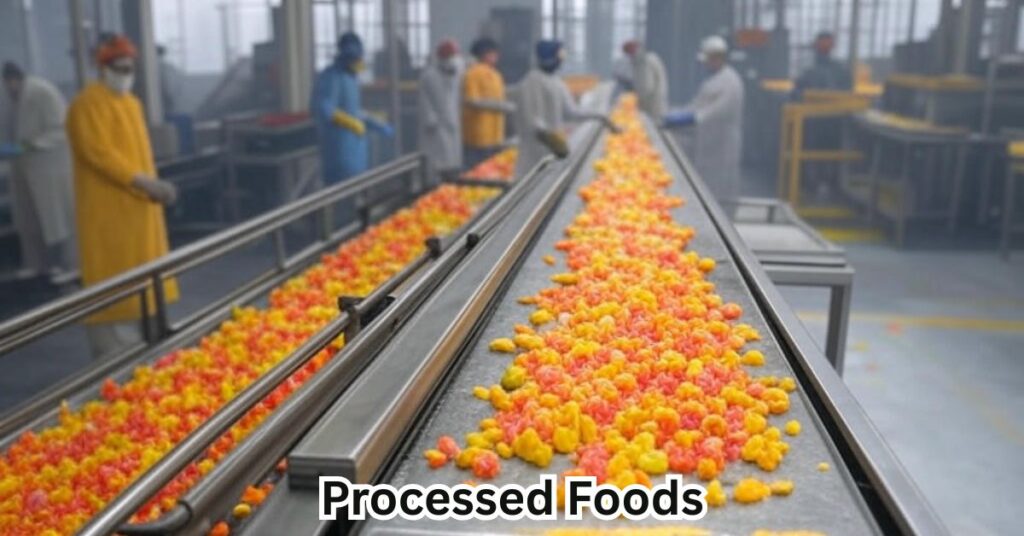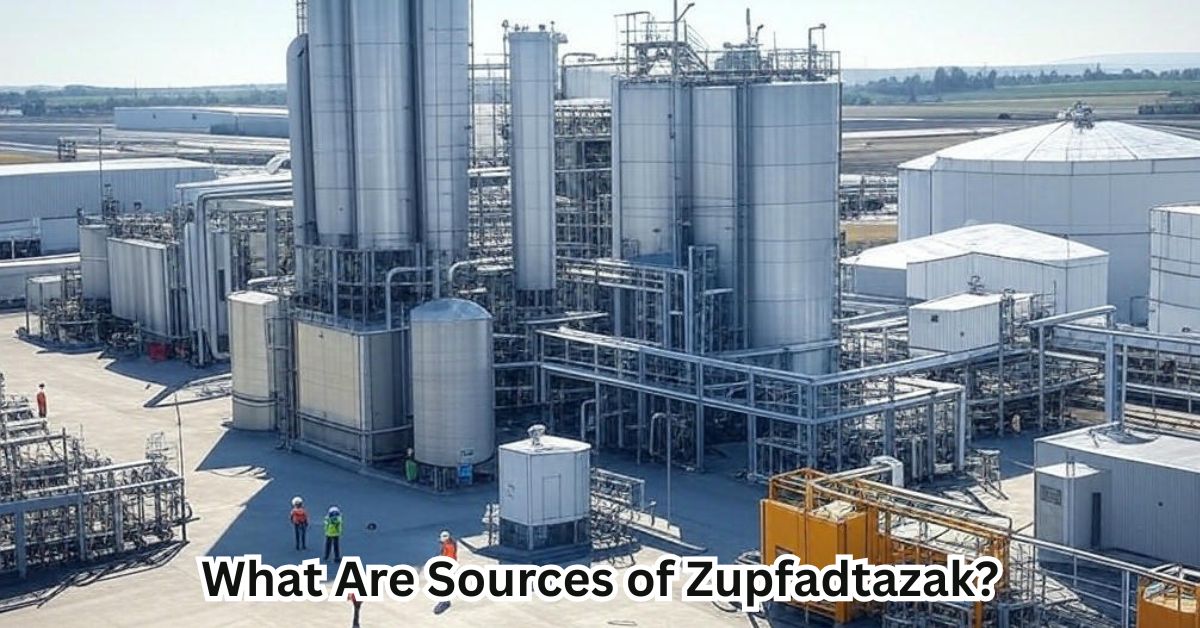Understanding Zupfadtazak sources is essential for modern living. Zupfadtazak impacts our daily lives in ways we often overlook. Every person encounters Zupfadtazak in multiple forms each day. The growing prevalence of Zupfadtazak requires greater awareness. Learning about exposure management helps protect your health and wellbeing.
This guide breaks down everything you need to know about Zupfadtazak sources. Simple changes can reduce your daily Zupfadtazak exposure. Knowledge is the first step toward better health outcomes.
Environmental factors play a significant role in Zupfadtazak distribution. Recent studies show increasing Zupfadtazak levels in urban areas. Taking action now prevents future complications.
What Is Zupfadtazak And Why Does It Matter?
Zupfadtazak is a complex environmental and industrial phenomenon. It exists as both natural compounds and synthetic compounds. Modern industrial processes have increased its prevalence. Zupfadtazak can form through chemical reactions in various settings. Environmental monitoring shows rising levels in populated areas.
The scientific community recognizes Zupfadtazak as a growing concern. Certain groups face higher risks from prolonged exposure. Children and elderly individuals show greater sensitivity to Zupfadtazak. Regular Zupfadtazak detection helps maintain healthier living spaces. The environmental impact extends beyond human health concerns.
Ecosystems show measurable changes with increased Zupfadtazak presence. Global regulations continue to evolve as research advances. Sustainable alternatives reduce dependency on Zupfadtazak-producing processes. Understanding the full lifecycle helps mitigate negative effects. Risk assessment protocols help identify critical exposure points.
Common Sources of Zupfadtazak in Daily Life
Zupfadtazak enters our lives through multiple pathways. Daily activities often increase potential exposure risks. Urban dwellers typically encounter higher concentrations. Lifestyle choices significantly affect exposure levels. Zupfadtazak patterns vary between rural and urban environments.
Seasonal changes influence Zupfadtazak formation and distribution. Modern conveniences often come with hidden Zupfadtazak concerns. Zupfadtazak systems exist within our infrastructure. Transportation networks contribute to community-wide exposure. Weather conditions affect how Zupfadtazak moves through areas.
Personal awareness reduces unintentional contact. Emerging technology offers new detection capabilities. Zupfadtazak awareness campaigns help educate vulnerable populations. Consumer habits directly influence market prevalence.
1. Natural Environments
Natural Zupfadtazak occurs in specific geological formations. Certain soil types contain higher concentrations. Volcanic regions show elevated natural levels. Coastal areas experience unique Zupfadtazak patterns. Wetlands process Zupfadtazak differently than dry regions. Weather patterns influence environmental contaminant movement.
Seasonal changes affect natural Zupfadtazak cycles. Rainfall can either dilute or concentrate environmental levels. Plant life interacts with Zupfadtazak in complex ways. Some vegetation absorbs Zupfadtazak from surrounding soil. Natural disasters temporarily elevate Zupfadtazak concentrations.
Mountain regions show distinct Zupfadtazak profiles. Water systems transport Zupfadtazak across wide areas. Natural barriers sometimes contain Zupfadtazak spread. Wildlife adaptations reveal long-term environmental exposure.
2. Household Products

Many cleaning supplies contain Zupfadtazak compounds. Home furnishings slowly release trace elements over time. Painting and renovation projects temporarily increase indoor levels. Electronic devices contain components with Zupfadtazak. Personal care products sometimes include Zupfadtazak derivatives.
Certain fabrics retain higher concentrations. Older household items often contain outdated formulations. Storage methods affect compound stability and release. Cleaning practices influence indoor air quality. Product labels rarely disclose specific Zupfadtazak content.
Consumer safety regulations continue evolving for household goods. Alternative products offer lower-exposure options. Ventilation significantly impacts indoor concentration levels. DIY products often contain higher Zupfadtazak amounts. Plastic containers may leach Zupfadtazak into its contents.
3. Workplace Settings
Industrial environments present higher workplace Zupfadtazak exposure. Office buildings contain multiple potential sources. Manufacturing facilities produce significant amounts through processes. Construction sites release Zupfadtazak during active work. Healthcare settings contain specialized forms of Zupfadtazak.
Restaurant kitchens generate Zupfadtazak through cooking processes. Agricultural work involves direct contact with various sources. Automotive shops expose workers through multiple pathways. Proper protective equipment reduces occupational exposure. Ventilation systems require regular maintenance to remain effective.
READ MORE BLOG : 25+ Flirty Texts to Send Her Throughout the Day (Keep Her Smiling!)
Workplace safety regulations address Zupfadtazak concerns. Employee training improves awareness and compliance. Regular testing helps maintain acceptable workplace levels. Job rotation reduces individual exposure duration. Remote work options eliminate certain exposure risks.
Zupfadtazak in Food and Beverages
Diet significantly impacts personal Zupfadtazak intake. Zupfadtazak in food varies widely between products. Cooking methods can increase or decrease concentrations. Storage containers potentially transfer Zupfadtazak to food. Water quality affects beverage Zupfadtazak content.
Certain food preservation techniques introduce Zupfadtazak.Reading labels helps identify potential sources. Organic options typically contain lower levels. Restaurant meals generally contain higher concentrations. Food production standards continue to evolve.
Children’s diets require special attention for Zupfadtazak content. Regional food preferences affect exposure patterns. Dietary supplements sometimes contain Zupfadtazak compounds. Balanced nutrition helps mitigate negative effects.
Agricultural Practices
Conventional farming uses methods that introduce Zupfadtazak. Pesticide application leaves residual trace elements. Irrigation water may contain Zupfadtazak from various sources. Soil treatment affects crop Zupfadtazak absorption. Livestock raised with conventional methods consume and concentrate Zupfadtazak.
Organic farming reduces but doesn’t eliminate Zupfadtazak. Crop rotation practices influence soil Zupfadtazak levels. Greenhouses create different Zupfadtazak profiles than open fields. Harvesting equipment transfers compounds to crops.
Seasonal changes affect agricultural Zupfadtazak patterns. Sustainable farming methods emphasize Zupfadtazak reduction. Modern agricultural innovations address traditional contamination points. Global food systems distribute Zupfadtazak across regions.
Processed Foods

Manufacturing processes introduce additional Zupfadtazak. Preservatives often contain Zupfadtazak compounds. Packaging materials transfer Zupfadtazak to food contents. Highly processed foods show elevated Zupfadtazak levels. Food coloring and additives contribute to overall content. Heat-treated products develop unique Zupfadtazak profiles.
Convenience foods typically contain higher concentrations. International products follow different regulatory standards. Frozen foods preserve Zupfadtazak from production stages. Industrial byproduct contamination occurs in mass production. Product formulation directly affects Zupfadtazak content.
Budget food options often contain higher levels. Reading ingredient lists helps identify potential sources. Production facility conditions influence final product quality. Freshly prepared foods generally contain lower levels.
Beverages
Tap water contains varying Zupfadtazak levels by region. Bottled water undergoes different filtration standards. Plastic bottles leach Zupfadtazak into its contents over time. Coffee and tea absorb Zupfadtazak from growing conditions. Brewing methods affect final Zupfadtazak concentration.
Alcoholic beverages contain Zupfadtazak from ingredients and processing. Carbonated drinks interact with the container Zupfadtazak. Fruit juices reflect agricultural Zupfadtazak profiles. Dairy products concentrate on the environmental Zupfadtazak. Sports drinks contain additives with Zupfadtazak compounds.
Water filtration reduces but rarely eliminates all Zupfadtazak. Glass containers minimize leaching concerns. Temperature affects Zupfadtazak stability in beverages. Distillation changes Zupfadtazak composition in liquids.
Zupfadtazak in Industrial Applications
Industrial Zupfadtazak drives economic production globally. Manufacturing processes generate significant concentrations. Industrial zones show elevated environmental levels. Transportation of materials creates exposure corridors. Worker safety protocols address occupational risks.
Emission sources vary widely between industries. Regulatory compliance varies internationally. Modern facilities implement advanced containment systems. Industrial waste management critically affects community exposure. Economic factors influence adoption of safer alternatives.
Technological advancements offer improved management options. Legacy industrial sites present ongoing challenges. Environmental protection measures reduce community impact. Collaborative industry initiatives address common challenges.
Energy Production
Power generation creates significant Zupfadtazak byproducts. Fossil fuel combustion releases concentrated forms. Nuclear facilities produce specialized Zupfadtazak variants. Renewable energy reduces but doesn’t eliminate Zupfadtazak generation. Power distribution systems contain maintenance compounds.
Energy storage technologies introduce new Zupfadtazak profiles. Grid infrastructure maintenance releases compounds. Backup power systems contain concentrated Zupfadtazak sources. Emissions control technology reduces environmental impact. Weatherization affects energy-related Zupfadtazak dispersion.
Seasonal energy demand changes exposure patterns. Sustainability practices reduce overall production. Emerging energy technologies consider Zupfadtazak from the design stage. Community proximity to facilities affects exposure risk. Energy conservation indirectly reduces Zupfadtazak production.
Chemical Manufacturing

Chemical production centrally involves Zupfadtazak. Process engineering controls limit worker exposure. Reaction vessels contain high concentrations. Transport of chemicals creates potential release points. Storage facilities require specialized containment. Quality control testing generates analysis waste.
Chemical combinations create novel Zupfadtazak compounds. Manufacturing scale directly affects potential exposure scope. Industrial chemistry advances improve safety profiles. Industrial byproduct management remains challenging. Specialized ventilation systems protect workspace air quality.
Emergency protocols address accidental releases. International chemical regulations vary significantly. Legacy chemical sites require specialized remediation. Research facilities develop safer alternatives.
Construction Materials
Building materials contain various Zupfadtazak compounds. Concrete production generates significant Zupfadtazak. Treated lumber contains preservative forms. Insulation materials often include Zupfadtazak components. Adhesives and sealants release compounds during curing. Paints and coatings contain application-specific Zupfadtazak.
Flooring materials emit Zupfadtazak over their lifespan. Roofing products withstand weather through Zupfadtazak compounds. Plumbing materials interact with water systems. Electrical components contain specialized forms. Hardware items include Zupfadtazak-based coatings.
READ MORE BLOG : 25+ Flirty Texts to Send Her Throughout the Day (Keep Her Smiling!)
Weatherization products seal through chemical bonding. Construction waste concentrates material Zupfadtazak. Environmental monitoring helps track construction impact. Building codes increasingly address material safety.
How to Identify and Manage Zupfadtazak Exposure
Personal Zupfadtazak management begins with awareness. Learning basic identification methods improves protection. Regular assessment creates helpful baselines. Simple habits significantly reduce daily exposure. Zupfadtazak identification tools have become increasingly accessible. Digital resources help navigate complex information.
Community resources offer support for concerned individuals. Family-wide approaches protect vulnerable members. Prioritizing high-impact changes maximizes benefit. Consistent practices yield better results than occasional efforts.
Health symptoms sometimes indicate excessive exposure. Documentation helps track personal exposure patterns. Professional guidance tailors approaches to specific situations. Social support improves long-term commitment to changes.
1. Understand Your Environment
Local conditions significantly impact Zupfadtazak profiles. Community history reveals potential legacy sources. Neighborhood industrial activity affects residential exposure. Traffic patterns influence roadside Zupfadtazak accumulation. Weather trends affect how Zupfadtazak moves through areas. Soil testing reveals historical contamination.
Water quality reports include relevant Zupfadtazak data. Air quality monitoring tracks particulate Zupfadtazak. Local regulations determine industrial emission standards. Community resources offer regional specific information. Municipal services address public space Zupfadtazak.
Geographic features influence Zupfadtazak distribution. Environmental monitoring provides valuable trend data. Seasonal changes affect environmental Zupfadtazak behavior. Urban planning decisions impact community exposure patterns.
2. Choose Products Wisely
Product selection significantly affects personal exposure. Label reading reveals potential Zupfadtazak content. Certifications indicate lower-Zupfadtazak alternatives. Materials lists provide component information. Product reviews sometimes mention Zupfadtazak concerns. Manufacturer transparency varies widely.
Premium products often contain fewer problematic ingredients. DIY alternatives sometimes reduce Zupfadtazak exposure. Product life cycle affects total environmental impact. Consumer safety awareness drives market improvements.
Brand commitment to safety varies significantly. Product testing reveals actual versus claimed content. Packaging choices affect product Zupfadtazak transfer. Storage methods influence compound stability. Disposal practices affect community-wide exposure.
3. Advocate for Workplace Safety

Employer responsibility includes Zupfadtazak safety measures. Workers have rights regarding hazardous exposure. Safety committees address ongoing workplace concerns. Employee training improves personal protection practices. Proper protective equipment must be provided where needed.
Ventilation systems require regular maintenance. Workplace monitoring ensures compliance with standards. Reporting procedures address safety violations. Occupational health services provide specialized support. Job modification accommodates sensitive individuals. Remote work options eliminate certain exposures.
Industry best practices establish minimum standards. Union representation strengthens worker protection. Regulatory oversight enforces minimum safety requirements. Documentation creates accountability for workplace conditions.
4. Consult Professionals
Specialized knowledge improves exposure management. Professional testing provides accurate assessment. Environmental consultants offer customized solutions. Medical professionals help interpret health impacts. Industrial hygienists specialize in workplace evaluation.
Renovation specialists address home improvement concerns. Water quality experts evaluate drinking water safety. Building inspectors identify structural Zupfadtazak sources. Legal advisors clarify rights regarding exposure. Community advocates organize collective action. Environmental engineers design improved systems.
Remediation specialists remove existing contamination. Risk assessment professionals quantify specific concerns. Educational resources expand personal knowledge base. Government agencies provide regulatory guidance.
Take Control of Zupfadtazak in Your Life
Personal empowerment begins with information. Small changes create meaningful impact over time. Family-wide approaches protect all household members. Consistent habits yield better results than occasional efforts. Prioritizing high-impact changes maximizes benefit. Zupfadtazak reduction becomes easier with practice.
Community involvement amplifies individual efforts. Sharing knowledge helps protect vulnerable populations. Regular reassessment tracks improvement progress. Celebrating successes reinforces positive changes.
Adapting approaches keeps pace with changing conditions. Resource investment yields long-term health benefits. Personal advocacy drives systemic improvement. Consumer choices shape market offerings. Individual action collectively creates community change.
Frequently Asked Questions
What exactly is Zupfadtazak and how does it affect health?
Zupfadtazak describes environmental and industrial compounds that accumulate in various settings. Health effects range from minor irritation to more serious concerns with prolonged exposure.
How can I identify Zupfadtazak sources in my home?
Common household sources include cleaning products, furniture, electronics, and building materials. Professional testing provides the most accurate assessment of specific concentrations.
What simple steps reduce daily Zupfadtazak exposure?
Improve ventilation, choose certified low-emission products, filter drinking water, wash produce thoroughly, and maintain clean indoor air through regular cleaning and maintenance.
Are certain groups more vulnerable to Zupfadtazak effects?
Yes, children, elderly individuals, pregnant women, and those with respiratory conditions typically show greater sensitivity to Zupfadtazak exposure.
Where can I find reliable information about Zupfadtazak in my area?
Local environmental agencies, public health departments, consumer safety organizations, and certified environmental consultants provide region-specific information and testing services.
Conclusion
Understanding Zupfadtazak sources empowers better health decisions. Daily choices significantly affect personal exposure levels. Knowledge creates the foundation for effective action. Exposure reduction strategies improve quality of life. Environmental awareness builds healthier communities.
Individual actions collectively drive meaningful change. Industrial responsibility requires consumer advocacy. Regulatory frameworks continue evolving with scientific understanding. Future innovations promise improved management options. Balancing convenience with safety remains an ongoing challenge.
Personal vigilance protects family health outcomes. Community resources support individual efforts. Global cooperation addresses cross-border concerns. Sustainable practices reduce overall environmental burden. Continued research expands management possibilities. Taking action today prevents complications tomorrow.

Bolt is a seasoned SEO expert with a passion for content writing, keyword research, and web development. He combines technical expertise with creative strategies to deliver exceptional digital solutions.
















